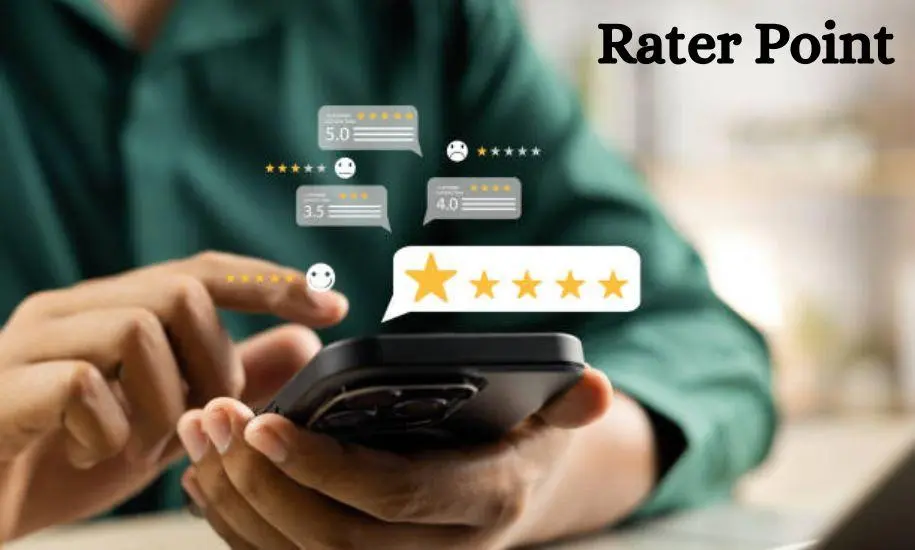
RaterPoint: The Future of Performance Evaluation and Feedback Management
In an increasingly competitive business landscape, organizations are constantly seeking ways to enhance their performance management systems, ensuring that their employees are evaluated fairly, receive constructive feedback, and are supported in their professional growth. Traditional performance evaluations have often been criticized for their lack of real-time feedback, biases, and inefficiency in aligning individual goals with broader organizational objectives. To address these challenges, modern solutions like RaterPoint have emerged as game-changers, offering a sophisticated, data-driven approach to performance evaluation and feedback management.
This article explores RaterPoint, a platform designed to revolutionize performance evaluations, helping businesses to assess, support, and develop their workforce. We will delve into its core features, benefits, applications, and the significant advantages it brings to organizations looking for an efficient, transparent, and scalable solution.
What is RaterPoint?
At its core, RaterPoint is a comprehensive performance evaluation platform that allows businesses to manage employee feedback, performance reviews, and growth strategies. It is designed to replace outdated, manual, and error-prone performance appraisal systems with a more streamlined, real-time, and data-driven approach. The platform is built to support various feedback models, including 360-degree feedback, self-assessments, and peer reviews, making it a versatile tool for organizations across industries.
One of the key advantages of RaterPoint is its ability to collect and analyze feedback from multiple sources. This multidimensional approach provides a holistic view of an employee’s performance, offering valuable insights into strengths, areas for improvement, and overall contributions to the organization. Whether it’s a small team or a large enterprise, RaterPoint can scale to meet the needs of any organization, making it an essential tool in modern performance management.
Core Features of RaterPoint

1. Customizable Evaluation Templates
Every organization has its unique needs, and RaterPoint understands that. The platform provides customizable evaluation templates that allow HR professionals and managers to create performance review forms suited to the specific role, department, or industry. This level of customization ensures that evaluations are relevant and tailored to organizational objectives, helping align individual performance with the company’s strategic goals.
These templates can include specific competencies, KPIs (Key Performance Indicators), and goal metrics, ensuring that the evaluation process is both comprehensive and aligned with the broader mission of the business. The flexibility of it enables organizations to update these templates regularly to reflect any changes in company strategy, market dynamics, or industry standards.
2. 360-Degree Feedback
One of the standout features of it is its ability to gather 360-degree feedback from multiple stakeholders. Traditionally, performance reviews were often limited to input from supervisors or managers. However, it expands this feedback loop by incorporating insights from peers, direct reports, clients, and even self-assessments.
This holistic approach enables managers to get a comprehensive view of an employee’s performance, which helps to eliminate any potential biases that may arise from a single source of feedback. Furthermore, employees receive more meaningful, constructive input, which aids in their professional development.
3. Real-Time Feedback
Unlike traditional performance reviews that typically happen once or twice a year, it allows for real-time feedback. Managers and peers can provide feedback on an employee’s performance as events occur, ensuring that feedback is fresh, relevant, and actionable. Real-time feedback helps employees address issues immediately, fostering a culture of continuous improvement.
The ability to receive immediate recognition or constructive criticism promotes a growth mindset and ensures that employees are aware of their performance at any given moment. This constant feedback loop encourages engagement and can significantly improve employee satisfaction and performance.
4. Advanced Analytics and Reporting
RaterPoint goes beyond simply gathering feedback—it turns this feedback into actionable insights through advanced analytics and reporting tools. The platform processes data from evaluations and presents it in easy-to-read, visually engaging reports that managers and HR teams can use to make informed decisions about promotions, training programs, and development opportunities.
These analytics also help identify patterns and trends across teams and departments, allowing businesses to spot high-performing individuals or teams, as well as areas where additional support or resources may be needed. This data-driven approach empowers organizations to make objective decisions rather than relying on subjective judgment.
5. Seamless Integration with Existing Systems
A major concern for businesses adopting new technologies is the integration of these tools with their existing systems. Fortunately, it integrates seamlessly with a variety of HRIS (Human Resource Information Systems), learning management systems (LMS), payroll systems, and other enterprise software. This compatibility ensures a smooth flow of data between platforms and prevents duplication of efforts.
For example, performance data gathered on it can be integrated with payroll systems to help determine compensation adjustments based on performance. Additionally, integration with LMS can trigger personalized development plans for employees based on the results of their performance reviews.
6. Mobile Accessibility
In today’s fast-paced and increasingly remote work environment, having mobile access to performance management tools is essential. RaterPoint offers a mobile app that allows managers and employees to give and receive feedback, view performance metrics, and track progress, all from their smartphones or tablets.
This flexibility ensures that feedback is not constrained by physical location, making it easier for managers to stay connected with their teams, even if they are working remotely or in different time zones. Mobile accessibility increases engagement and helps to keep feedback continuous and consistent.
7. AI-Powered Sentiment Analysis
A unique feature of it is its use of artificial intelligence (AI) to conduct sentiment analysis. The platform uses AI algorithms to analyze the tone, language, and context of feedback to determine the sentiment behind it—whether it is positive, negative, or neutral. This feature provides valuable insights into the underlying emotions that may be influencing feedback, helping HR professionals to identify potential issues or areas where an employee may need additional support.
Sentiment analysis also helps to gauge the overall mood and culture within an organization, allowing managers to address concerns before they escalate.
Benefits of Using RaterPoint

1. Enhanced Employee Engagement
When employees feel valued and receive timely, constructive feedback, they are more likely to stay engaged with their work. it promotes a culture of recognition by allowing peers and managers to acknowledge contributions regularly. This consistent feedback loop enhances employee satisfaction, motivation, and retention.
Moreover, employees are more likely to improve their performance when they understand where they stand and what areas they need to focus on. With it, employees have a clearer understanding of their strengths and areas for improvement, which boosts overall engagement and morale.
2. Objective and Fair Evaluations
Traditional performance reviews are often susceptible to bias, whether it be due to personal preferences, misunderstandings, or a lack of data. it addresses this issue by offering multiple feedback sources and objective performance metrics. The platform ensures that employees are evaluated based on their actual performance and contributions, rather than subjective opinions.
3. Data-Driven Decision Making
With RaterPoint’s powerful analytics tools, HR teams and managers can make data-driven decisions regarding promotions, raises, and career development opportunities. By tracking performance over time, it helps businesses identify high-potential employees, recognize skill gaps, and align talent development efforts with organizational goals.
4. Improved Organizational Performance
By providing employees with continuous feedback and the tools they need to improve, it helps foster a culture of excellence. As employees develop and grow, the entire organization benefits from a more skilled, motivated, and high-performing workforce. This leads to better business outcomes, higher productivity, and improved customer satisfaction.
Applications Across Different Industries

RaterPoint is not limited to a specific industry or business size. It is a flexible solution that can be adapted to the needs of any organization, from startups to large enterprises, across various sectors. Here are some examples of how different industries can benefit from it:
Corporate Sector: In large organizations, where performance evaluations are often complex and involve multiple departments, it helps streamline the process, ensuring that feedback is consistent and aligned with company goals.
Healthcare: In healthcare settings, where patient satisfaction and employee performance are closely tied, it enables medical institutions to assess staff performance, gather patient feedback, and implement changes to improve patient care.
Education: Educational institutions can use it to gather feedback from students, parents, and colleagues about faculty performance, ensuring that teachers are meeting educational standards and providing a high-quality learning experience.
Retail and Customer Service: In retail environments, where customer interaction is crucial, it helps collect customer feedback and employee performance data to improve service delivery and customer satisfaction.
Challenges Addressed by RaterPoint
Organizations often face several challenges in managing employee performance and feedback, including bias in evaluations, inconsistent feedback, and the complexity of tracking long-term performance. RaterPoint addresses these issues by offering a structured, transparent, and continuous feedback system. By integrating AI-driven tools and offering real-time insights, it reduces the impact of bias and ensures that employees are given fair and consistent evaluations.
Conclusion
In conclusion, it represents the future of performance evaluation and feedback management. With its customizable templates, 360-degree feedback, real-time input, advanced analytics, and seamless integration capabilities, it provides businesses with a powerful, scalable solution to manage employee performance and growth. By creating a culture of continuous improvement, objective assessments, and data-driven decision-making, it helps organizations unlock the full potential of their workforce, driving better business outcomes and higher employee satisfaction.
The adaptability of it across industries, coupled with its focus on fairness, transparency, and real-time feedback, makes it a game-changer for businesses looking to modernize their performance management processes.



